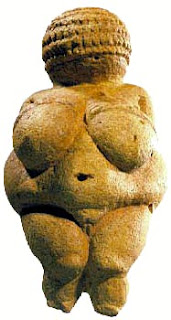What is the first and most significant artistic expression of humanity? What innovations has  |
Venus of Willendorf | |
 |
Venus of Willendorf | |
 |
Brassempouy Venus
|
 |
| Kostenki Venus |
 |
| Laussel Venus |
 |
| Venus of Grimaldi |
 |
| Lascaux, scene of the dead man |
 |
| Lascaux, Chinese horse scene |
 |
| Lascaux, swimming deer scene |
 |
| Lascaux, hunting scenes |
What is considered the first and most significant artistic expression of humanity? "Whereas it is probably an ancient work, would be valid as art cataloged even if he did not follow the academic pattern? Paco, Lima. Dear Paco this question is very interesting because it questions the first significant work of art made by humans. One of the oldest human works is known is the Venus of Willendorf, 24.000 to 20.000 BC, measured 11.1 cm in height and 5.7 cm wide. The material of Venus is made of limestone and is colored with red ocher. There are several hypotheses for why it was done: as a good luck charm, the representation of a goddess who was the mother earth, which is the idealized representation of females with the ability to produce life. My theory is that it was a charm to promote fertility. The older work that is known is the Venus de Brassempouy, which is 30,000 BC, with only the head and neck of this piece. Although there are many Venus with the same characteristics as the Venus of Willendorf, such as Lespugue Venus, the Venus of Kostenki, Laussel Venus, Venus de Grimaldi, all older women with big breasts and bare, the Venus of Willendorf is the most famous because it has more aesthetic, is symmetrical, more realistic and humane.
Paco, to continue with your question, "What is the most significant artistic expression of humanity?, Should be the caves of Lascaux, 17.000 AC, southwest of France because these caves have six galleries containing approximately 2.000 figures can be grouped into three categories, animal, human and abstract. In the caves is the image of a bull over 5 meters long. Among the animals that are painted are bulls, bears, horses, rhinoceroses, bison and deer. There are no images of reindeer, which was his first feeding, so argues that the drawings were made for rites to celebrate the game and / or have power over the animals when they were before the hunt. Many of the bulls appear in motion, so there were only simple pictures. The fact that he was a very good artist.
Some drawings are more than three meters ground, that means that mobile scaffolding had to make these drawings on the walls and ceiling of the cave. There is a scene in the cave called "dead man" where there is an anthropomorphic figure (who looks human) that is a dead man's face bird. In front of the dead man is a dying bison which apparently killed the man who has the gut that are falling, wounded by an arrow and a spear visible. There is a bird on a stick, which could represent the afterlife of the deceased. Birds because they have the ability to fly are associated with gods. In another scene called "The Chinese Horse", you see arrows on the hunt for the horses. In another painting called "deer swimming" can be seen crossing the river deer. This narrative scene demonstrates the complexity of rock art and the artistic talent of those who made the drawings that lived in these caves. As there was no lighting in the cave, they had to light candles made from animal fat. Paco, by the magnitude of the paintings in the caves of Lascaux, I believe this is the most significant ancient work of mankind.
The last part of your question is very interesting because you say that if you label it as art would be valid even if there was a pattern of academic art. Art is all that is created, with a personal touch to beautify the world. This is the purpose of art in the time they did the paintings of the Lascaux caves made for two reasons, to decorate and embellish the caves and to shamanism about animals and hunting of these animals. Further, the figures are aesthetic and pleasing to see. This also shows that since the beginning of mankind, man has been an artist by nature and has lived with art.
Paco this is your second question on my blog so thank you very much. I hope my answer is to your satisfaction. Augusto
Chimpan










0 comments:
Post a Comment